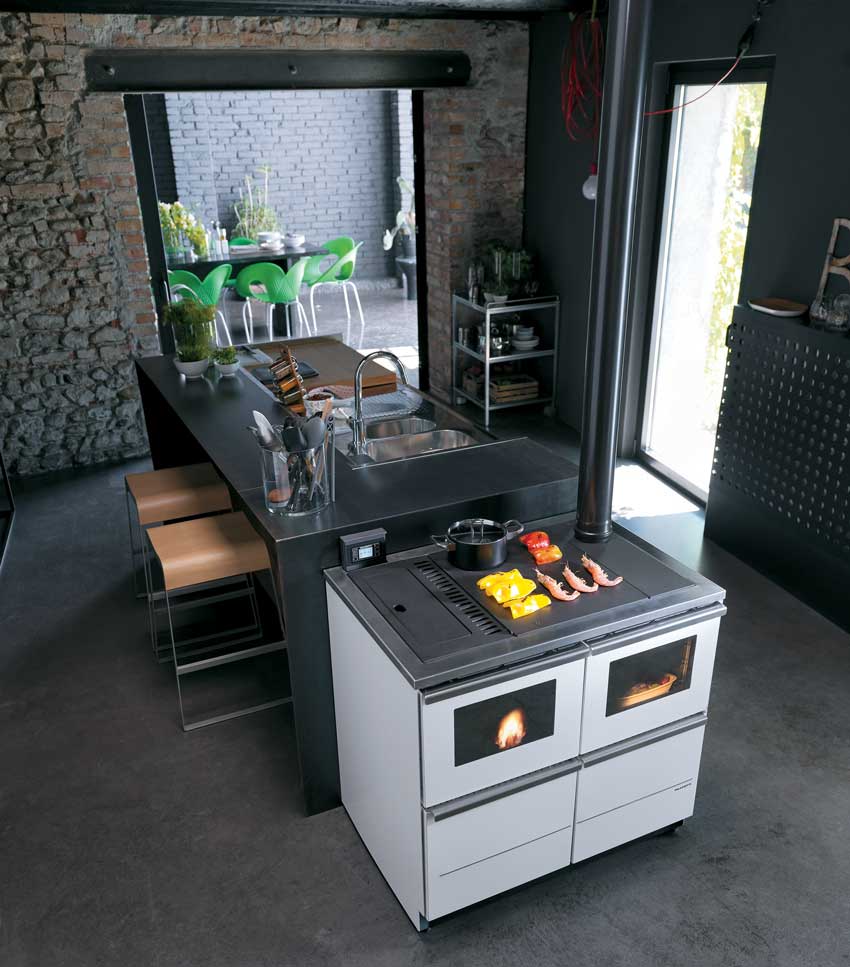Deciding whether to purchase a wood burner or a pellet stove is about convenience and ambience.
Many people are now returning to traditional home-heating for several reasons. Not least, the potential heating cost savings from using a wood-burning stove plus the efficiency that pellet burners offer. So what’s the difference? And which should you choose?
Some say:
“Nothing creates a more delightful ambience in a living room than a crackling fire and the faint odour of wood burning”.
There are just two things to consider; would you instead burn wood, or burn bio-fuel pellets? Both provide dry radiant heat but have different costs and convenience associated with them. A wood burner needs constant management, for example, whereas a pellet burner simply needs feeding. And, whilst wood burners and pellet stoves need regular cleaning, the volume of ash produced by the latter is tiny compared to a wood stove – as are it’s emissions. Pellet stoves burn almost smokeless, so cleaning is more convenient at the exhaust and on other moving parts.
Pellet Burners have been around for some considerable time – yet they still feel like a relatively new idea here in Cyprus.

What are the benefits of a Pellet Stove?
Thermostatically controlled they are hugely reliable, efficient and long-term, cost-effective. Pellet Stoves have calendar and date functions and timers so you can switch on the stove before you awake, and again before you come home from work. Many even come with built-in WiFi and an Android or iOS app from which you can control the pellet burner even when not at home.
Depending on a few factors such as how warm you like your room and its volume, the pellet burn rate is slow. Typically, you might use a 15kg bag of pellets every 3-days in a 10Kw stove – costing approximately €0.50 p/hour (based on 5 hours of use a day).
Early designs of pellet stoves were, well let’s say, not particularly attractive. Nowadays they come in all shapes and sizes and are certainly more desirable looking. Furthermore, and because they are very well insulated, they can be installed almost anywhere in the home. They are available as freestanding models, inserts and with or without a flame-viewing window.
However, they are often a little more expensive than wood burners to buy and are unusable in a power-cut.

What are the benefits of a Wood Burning Stove?
Aesthetically a wood burner is hard to beat for looks, ambience and smell. They are likely cheaper to buy, although installation costs are not too dissimilar from a pellet stove.
The latest wood burners are incredibly efficient. The Environment Protection Agency (EPA) demands that these stoves produce no more than 4.5 grams of smoke per hour. The combustion chambers ensure that more smoke is burned-off before venting out through the flue or chimney.
A wood stove should easily last between 20 and 25 years – compared to a pellet stove lifespan of around 15-20 years. Lifespan differences are because the latter has electrical circuitry and other moving parts that may eventually fail. However, when properly maintained, there every reason to believe that your wood burner will serve you well for many decades to come.
A wood burner will work independently of any electrical power cut – and if you choose the right one, you can even cook on them.

See our range of wood burners and pellet stoves here on our website; or call into our shop in Polis Chrysochous.
- Get in touch now by calling +357 96 578 001 or email info@ambioenergy.com
Read our Blog | Read about BioFuels | Contact Us | Follow us on Facebook





